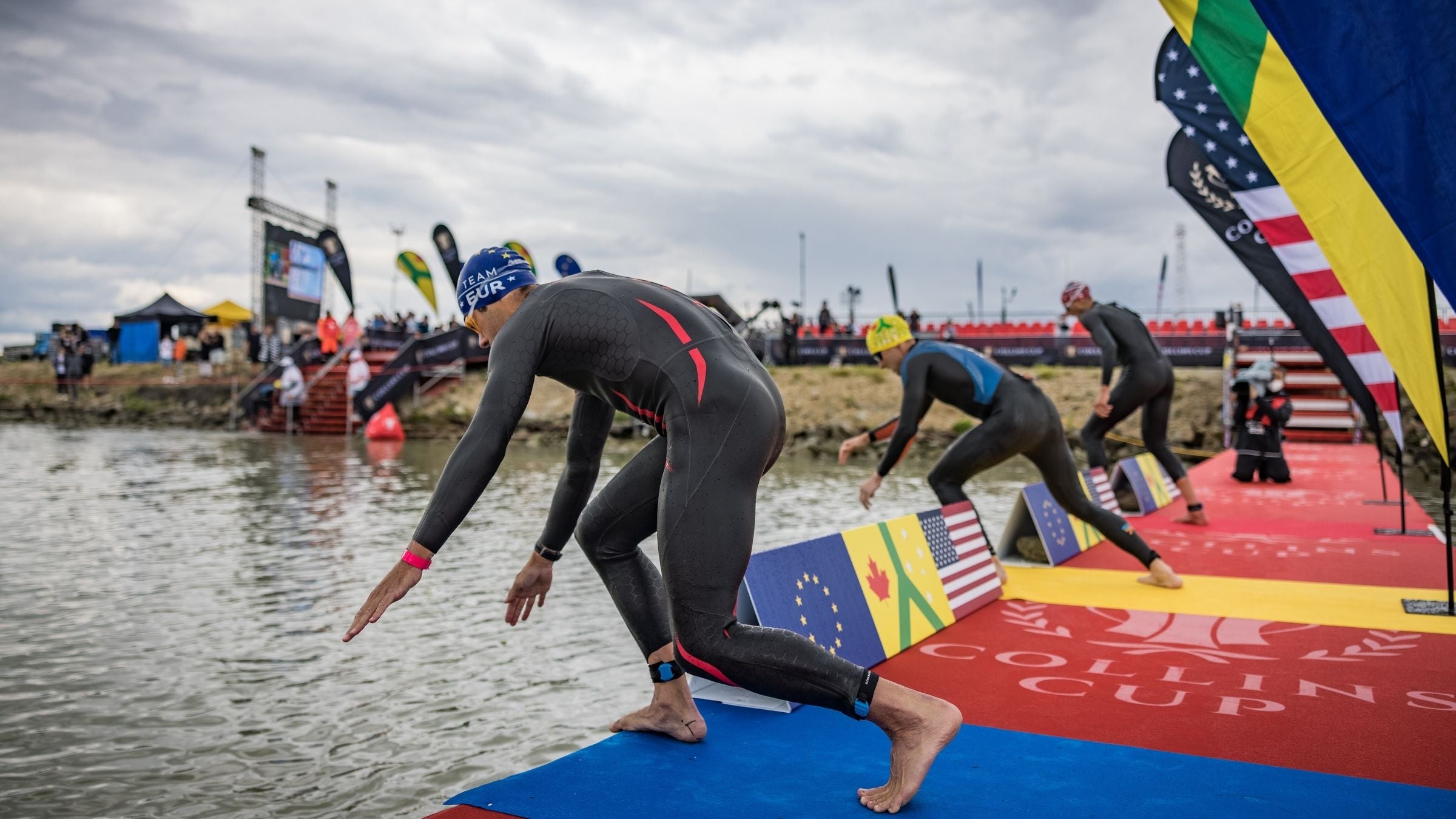Pros Battle for Rankings in Final Races of the Year

Pro triathletes have been ranked before. There used to be an Ironman points system to earn spots to Kona. In the World Triathlon short-course rankings, year-end standings (and prize money) are based on performances over the season. There are also overall prize money listings and rankings for individual events, like the Super League championship series in September.
Why then are pros so worked up about the PTO rankings this year? And why are so many big names lining up at late-season races? In short: Because there’s a lot of money on the line based on those rankings.
RELATED: Pro Triathletes Unionize—Sort Of—With Funding from Billionaire Mike Mortiz
The PTO rankings
In early 2020, the Professional Triathletes Organization launched with a plan to create a pro-backed organization that would use flagship events, like the Collins Cup, and media rights to generate revenue to funnel back into the sport and to the pros. Last year, that involved paying out $2.5 million in year-end bonuses and backing prize purses to smaller races in an attempt to buoy a COVID-ravaged sport. The PTO paid out those bonuses and extended Collins Cup invites via their new rankings system.
Now, this year, with enough races actually going off (and the Collins Cup finally happening) to really establish a database of results, the PTO rankings system is being put to a stress test. And with the end of the season closing in—and only a handful of big races left—many of the pros looking to earn those final year-end bonuses are eyeing how they can move up, and who will come out on top?
For a deep dive on how the rankings work: How Pro Triathletes Are Now Being Ranked—And Why Not Everyone Is Happy About It
For the tl;dr, we talked to Thorsten Radde, of Trirating.com, who developed and runs the rankings algorithm.
Going into an event, Radde uses previous race data and previous results from the athletes in the race to establish projections on how the athletes should perform. He, then, compares his projections with the actual results after the event to see if there were trends—ie. if everyone went faster than projected, then that would mean the course or the day was fast. Those numbers are fed into an algorithm to create an adjustment factor, of sorts, which he applies to the projections to establish an “adjusted ideal time” (or AIT) for a given race. An athlete who hits the AIT earns 100 points. Faster than the AIT gets more points, slower gets less. An athlete who is 15% slower than the AIT gets zero points. And it rolls down the results in a linear fashion.
For reference, said Radde, an AIT and the 100 points that come with it is supposed to be granted for a very amazing performance, the kind of performance that would earn you a top three at a world championship.
But, it should be noted, the AIT system is race- and location-independent—which means that Daniela Ryf could, in theory, put down a 100-point-worthy performance at her local tri, in theory. It’s just more likely that it’ll only take that level of performance to win at a higher caliber event.
An athlete’s top three scores for the year are then averaged to determine their overall score. The overall score determines the rankings. The rankings determine the prize money. #1 gets $100,000, #2 gets $90,000, #20 gets $10,00, but then it’s $5,000 for the rest of the top 50 and $2,000 through 100th—meaning there are big incentives around those cut-offs.
What are athletes’ concerns?
The major complaint from athletes, though, is that they simply don’t know what time they have to do to earn the most points. They only find out a few days after the finish, once the numbers have been crunched, the algorithm run, and it all reviewed. That’s no fun for anyone.
This becomes especially challenging as we hit the final races where big names are laying it all on the line to move up or avoid moving down.
Who could move up or down?
Your best three races for the year count towards your overall score, so athletes are hoping to drop their lowest score with a better performance at the few races left in the year. At Ironman California this weekend, Gustav Iden and Jan Frodeno (currently ranked #1 and #2) will face off. Frodeno has a relatively low third score of 88 points from his win at Challenge Gran Canaria back in April. [His unofficial world record didn’t count for points.] So it seems likely he’ll move that low score up, and if he raises it enough over Iden’s then he could reclaim his throne as the #1.
Lionel Sanders will also be looking to move up from #6 at and athletes like Ben Hoffman, who has a very low score in this weird COVID year holding him down in 79th, will try to make a big jump with a high-scoring performance. (Hoffman has said he won’t be starting Ironman California, but will be racing Oceanside 70.3.)
Since Ironman California is a men’s only pro race, the women will then be looking for their own jumps at Ironman Florida in a few weeks.
There’s also Oceanside 70.3, Ironman Cozumel, Ironman South Africa, CLASH Daytona (and a few other races) that will all be run through the algorithm. Expect, for example, Charles-Barclay and Haug to be battling it out for those top spots in Daytona.
It can all feel a little abstract, data-heavy, and hard to follow, but for the pros fighting for thousands of dollars it’s very real—and it’ll make for some great racing, for better or worse, as the year winds down.
You can see all the rankings and points at protriathletes.org/rankings.